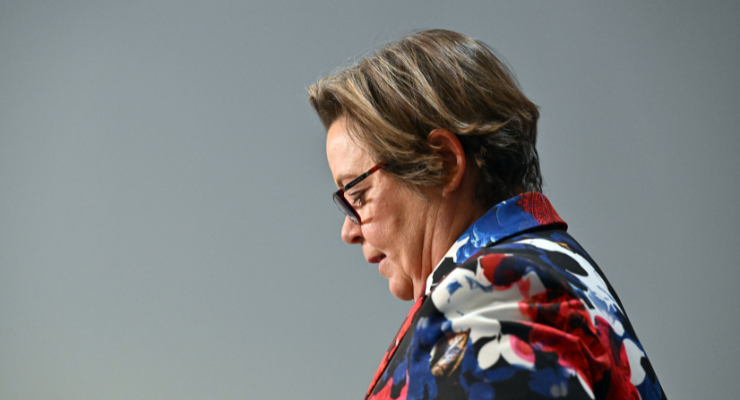
Where’s Resources Minister Madeleine King — the fossil fuel industry’s friend at court — at the moment? According to her most recent entry in the parliamentary register of interests, filed with commendable promptness yesterday, she’s off to Karratha in the Pilbara as part of an all-expenses-paid trip around Western Australia’s key extractive industry sites, including iron ore mines in the Pilbara and gas extraction facilities offshore.
All paid for by the WA Chamber of Minerals and Energy, the Minerals Council of Australia and the arch fossil fuel lobby, the Australian Petroleum Production & Exploration Association (APPEA).
This is not to suggest the trip is some sort of junket. According to her entry, King’s accommodation in Karratha is accommodation for mining workers, and it’s not much better in Newman. Five star it ain’t. But it does make us reflect on how state capture works when the mining and extractive industry pays for a minister to visit them.
Included in King’s tour is a trip today to Barrow Island — location of the spectacular carbon capture and storage (CCS) failure that is Chevron’s Gorgon field. King is a big advocate for the CCS project. Will she ask hard questions about why the project has routinely come nowhere near the storage targets Chevron has long promised, despite Gorgon being the simplest and easiest form of CCS there is? Or will she be receptive to Chevron officials spinning her the same excuses they tried unsuccessfully on the WA Environmental Protection Authority about Barrow Island?
On the upside, the fact that APPEA is paying for the trip represents the biggest contribution major gas exporters like Santos, Origin and Woodside have made to the public purse in years — far bigger than what they’ve paid in petroleum resource rent tax or, in some cases, company tax, despite tens of billions in revenue. Grateful taxpayers can but thank them.








CCS has never worked, does not work, will never work. Anyone who seriously thinks it might work one day should be put in a mental hospital for the criminally insane, not given the job of minister of resources. Chevron has failed to meet the terms of its agreement to CCS the CO2 that comes up with the methane (natural gas), so Gorgon should be shut down asap. We’ve paid them hundreds of millions of dollars to poison the atmosphere, which makes both them and us stupid. Enough is enough. NSN (Not Stupid Now).
Pity that HG&Roy are now off season – one their rugbaleeg stings dealt with CCS in their own unique way.
its a small price for Chevron to pay. They and their gas cartel mates just drafted the new ‘heads of agreement’ which was signed by the good minister. Happily for corporate shareholders, chevron etc only need ‘offer’ gas to domestic users without having to price lower than the LNG spot prices of Asia.
The rest of the federal cabinet are either too stupid or corrupt to notice, distracted by a few hundred grand of donations to their party from the gas mafia.
Our politicians cant even do corruption properly.
so here’s Madeleine King’s answer if asked by the media why she accepted these companies’ coin: “Well obviously I’d prefer they paid their taxes, but at least this small contribution helped save the Australian taxpayers a few dollars.”
She couldn’t pay for the trip herself out of her exorbitant salary?
The only ‘carbon capture and storage’ mechanism that has ever worked is fossil fuels themselves. Those deposits took hundreds of millions of years to form and yet we’ve managed to undo a large portion of their good effect in just a couple of centuries. So how good is CCS really, eh?